
Rolling Stone Ronnie Wood’s Ex-Wife Suffered from Hammertoes
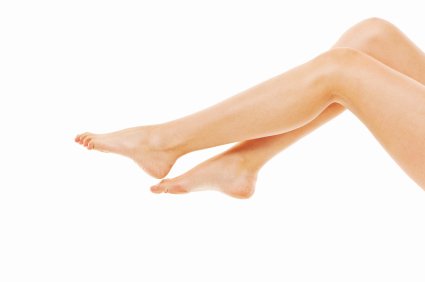 Jo Wood, ex-wife of Rolling Stone’s Ronnie Wood, has suffered from hammertoes, a condition that for her was hereditary and deformed her second toe. The pain eventually had gotten so bad that Wood decided to get surgery in which the surgeon had to remove a portion of the bone to realign the toe. Although there are non-surgical treatments, surgery is an option if pain does not recede. Eighteen months after her surgery, Wood was back to her regular routine.
Jo Wood, ex-wife of Rolling Stone’s Ronnie Wood, has suffered from hammertoes, a condition that for her was hereditary and deformed her second toe. The pain eventually had gotten so bad that Wood decided to get surgery in which the surgeon had to remove a portion of the bone to realign the toe. Although there are non-surgical treatments, surgery is an option if pain does not recede. Eighteen months after her surgery, Wood was back to her regular routine.
Hammertoes can be a painful condition to live with. If you are suffering from hammertoes, contact one of our podiatrists of University Foot and Ankle Center, LLC. Our doctors will treat your foot and ankle needs.
Hammertoe
Hammertoe is a foot deformity that affects the joints of the second, third, fourth, or fifth toes of your feet. It is a painful foot condition in which these toes curl and arch up, which can often lead to pain when wearing footwear.
Symptoms
- Pain in the affected toes
- Development of corns or calluses due to friction
- Inflammation
- Redness
- Contracture of the toes
Causes
- Genetics – people who are genetically predisposed to hammertoe are often more susceptible
- Arthritis – because arthritis affects the joints in your toes, further deformities stemming from arthritis can occur
- Trauma – direct trauma to the toes could potentially lead to hammertoe
- Ill-fitting shoes – undue pressure on the front of the toes from ill-fitting shoes can potentially lead to the development of hammertoe
Treatment
- Orthotics – custom made inserts can be used to help relieve pressure placed on the toes and therefore relieve some of the pain associated with it
- Medications – oral medications such as anti-inflammatories or NSAIDs could be used to treat the pain and inflammation hammertoes causes. Injections of corticosteroids are also sometimes used
- Surgery – in more severe cases where the hammertoes have become more rigid, foot surgery is a potential option
If you have any questions please contact our offices located in East Brunswick and Monroe Township, NJ. We offer the newest diagnostic and treatment technologies for all your foot and ankle needs.
Hammertoe
Hammertoes are painful deformities that frequently form on the second, third, or fourth toe. The condition is often caused by an issue in foot mechanics: the person’s particular gait or the manner in which they walk, or shoes that do not comfortably fit the deformity. Hammertoes can be formed after wearing shoes that are too narrow or short for the foot or have excessively high heels. Shoes that are not properly sized will force the toes into a bent position for long periods of time, causing the muscles to shorten and toes to bend into the deformity of a hammertoe.
Hammertoe can also be caused by complications from rheumatoid arthritis, osteoarthritis, trauma to the foot, heredity, or a cerebral vascular accident. Pain and difficult mobility of the toes, deformities, calluses, and corns are all symptoms of a hammertoe.
Someone who suspects they have the symptoms of a hammertoe should consult with a physician—particularly a podiatrist. Podiatrists diagnose and treat complications of the foot and ankle. If the podiatrist discovers that the affected toes are still flexible, treatment for the hammertoe may simply involve exercise, physical therapy, and better-fitting shoes. Treatment for hammertoes typically involves controlling foot mechanics, such as walking, through the use of customized orthotics.
For more serious cases in which the toes have become inflexible and rigid, surgery may be suggested. During the operation, the toe would receive an incision to relieve pressure on the tendons. A re-alignment of the tendons may then be performed by removing small pieces of bone to straighten the toe. In some cases, the insertion of pins is needed to keep the bones in the proper position as the toe heals. The patient is usually allowed to return home on the same day as the surgery.
If surgery is performed to repair a hammertoe, following the postoperative directions of your doctor is pertinent. Directions may include several stretches, picking up marbles with your toes, or attempting to crumple a towel placed flat against your feet. Wear shoes that have low heels and a wide amount of toe space to maintain comfort. Closed shoes and high heels should be avoided. Shoes with laces allow the wearer to adjust how fitted her or she may want the shoes to be and also allow for greater comfort. To provide adequate space for your toes, select shoes that have a minimum of one-half-inch of space between the tip of your longest toe and the inside of the shoe. This will also relieve pressure on your toes and prevent future hammertoes from forming.
Other preventative measures that can be taken include going shopping for new shoes in the middle of the day. Your feet are its smallest in the morning and swell as the day progresses; trying on and purchasing new shoes midday will give you the most reliable size. Be sure to check that the shoes you purchase are both the same size. If possible, ask the store to stretch out the shoes at its painful points to allow for optimum comfort.
University of Delaware Students Create Injury Monitoring Boot
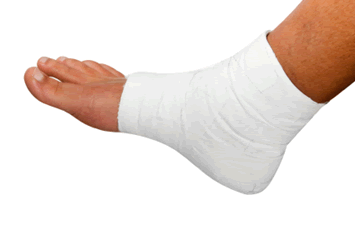 Undergraduate students at the University of Delaware have created a SmartBoot designed to closely monitor the progress of broken foot. The design behind the boot came from the idea that after sustaining an injury on the lower extremities, patients are sent home with instructions they may not know how to follow correctly. Professor Jill Higginson states, “Patients are often trained in the clinic on a bathroom scale and then sent home with crutches, with the assumption they can consistently perform partial weight bearing on their own.” The SmartBoot is designed to fix the confusion by studying the progress of the foot and letting the doctor know if the correct amount of weight has been put on the foot.
Undergraduate students at the University of Delaware have created a SmartBoot designed to closely monitor the progress of broken foot. The design behind the boot came from the idea that after sustaining an injury on the lower extremities, patients are sent home with instructions they may not know how to follow correctly. Professor Jill Higginson states, “Patients are often trained in the clinic on a bathroom scale and then sent home with crutches, with the assumption they can consistently perform partial weight bearing on their own.” The SmartBoot is designed to fix the confusion by studying the progress of the foot and letting the doctor know if the correct amount of weight has been put on the foot.
A broken foot requires immediate medical attention and treatment. If you are seeking treatment for a broken foot, visit one of our podiatrists of University Foot and Ankle Center, LLC. Our doctors will assess your injury and provide you with quality treatment.
Broken Foot Causes, Symptoms, and Treatment
A broken foot is caused by one of the bones in the foot typically breaking when bended, crushed, or stretched beyond its natural capabilities. Usually the location of the fracture indicates how the break occurred, whether it was through an object, fall, or any other type of injury.
Common Symptoms of Broken Feet:
- Bruising
- Pain
- Redness
- Swelling
- Blue (foot)
- Numbness
- Cold
- Misshapen
- Cuts
- Deformities
Those that suspect they have a broken foot shoot seek urgent medical attention where a medical professional could diagnose the severity.
Treatment for broken bones varies depending on the cause, severity and location. Some will require the use of splints, casts or crutches while others could even involve surgery to repair the broken bones. Personal care includes the use of ice and keeping the foot stabilized and elevated.
If you have any questions please feel free to contact our offices located in East Brunswick and Monroe Township, NJ. We offer the newest diagnostic tools and technologies to treat your foot and ankle needs.
Cricket Champion Matt Prior Retires Early Due to Achilles tendon Injury
 Matt Prior was forced to end his cricket career early due to a persistent Achilles tendon injury. Although Prior had operated on the injury, he had trouble rehabilitating the tendon and the intensity levels of training would just set him back. The injury had made playing as the Sussex wicketkeeper extremely difficult and painful. Prior is retiring at a very early age thirty-three, but has been thankful to be a part of one of the highest levels of cricket in England.
Matt Prior was forced to end his cricket career early due to a persistent Achilles tendon injury. Although Prior had operated on the injury, he had trouble rehabilitating the tendon and the intensity levels of training would just set him back. The injury had made playing as the Sussex wicketkeeper extremely difficult and painful. Prior is retiring at a very early age thirty-three, but has been thankful to be a part of one of the highest levels of cricket in England.
Achilles tendon injuries need immediate attention to avoid future complications. If you have any concerns contact one of our podiatrists of University Foot and Ankle Center, LLC. Our doctors will treat your foot and ankle needs.
What is the Achilles Tendon?
The Achilles tendon is a tendon that connects the lower leg muscles and calf to the heel of the foot. It is the strongest tendon in the human body and is essential for making movement possible. Because this tendon is such an integral part of the body, any injuries to it can cause severe difficulties and should immediately be presented to a doctor.
What are the symptoms of an Achilles Tendon Injury?
There are various types of injuries that can affect the Achilles tendon. The two most common are Achilles tendinitis and ruptures of the tendon.
Achilles Tendinitis Symptoms
- Inflammation
- Dull to Severe Pain
- Increased blood flow to the tendon
- Thickening of the tendon
Rupture Symptoms
- Extreme pain and swelling in the foot
- Total immobility
Treatment and Prevention
Achilles tendon injuries are diagnosed by a thorough physical evaluation, which can include an MRI. Treatment involves rest, physical therapy, and in some cases, surgery. However, various preventative measures can be taken to avoid these injuries, such as:
- Thorough stretching of the tendon before and after exercise
- Strengthening exercises like calf raises, squats, leg curls, leg extensions, leg raises, lunges, and leg presses
If you have any questions please feel free to contact our offices located in East Brunswick and Monroe Township, NJ. We offer the newest diagnostic tools and technology to treat your foot and ankle needs.
Colorado Rockies’ Corey Dickerson Suffering from Plantar Fasciitis
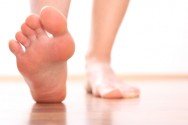 Corey Dickerson of the Colorado Rockies left his most recent game against the Dodgers in three innings due to plantar fasciitis pain. The heel pain has been bothering Dickerson’s left foot since spring training and the pain increased as he chased a ball in the outfield. The left fielder has been a key player for the team, but has been struggling in recent months due to his foot pain and has not participated in at least three of the ten Rockies’ games this season.
Corey Dickerson of the Colorado Rockies left his most recent game against the Dodgers in three innings due to plantar fasciitis pain. The heel pain has been bothering Dickerson’s left foot since spring training and the pain increased as he chased a ball in the outfield. The left fielder has been a key player for the team, but has been struggling in recent months due to his foot pain and has not participated in at least three of the ten Rockies’ games this season.
Plantar fasciitis can be very painful and inconvenient. If you are experiencing heel pain or symptoms of plantar fasciitis, visit one of our podiatrists of University Foot and Ankle Center, LLC. Our doctors can treat your heel pain as well as any other foot or ankle condition.
What is Plantar Fasciitis?
Plantar fasciitis is the inflammation of a the thick band of tissue that runs along the bottom of your foot, known as the plantar fascia, and causes mild to severe heel pain.
What Causes Plantar Fasciitis?
· Excessive running
· Non-supportive shoes
· Overpronation
· Repeated stretching and tearing of the plantar fascia
How Can It Be Treated?
· Conservative measures – anti-inflammatories, ice packs, stretching exercises, physical therapy, orthotic devices
· Shockwave therapy – sound waves are sent to the affected area to facilitate healing and are usually used for chronic cases of plantar fasciitis
· Surgery – usually only used as a last resort when all else fails. The plantar fascia can be surgically detached from the heel
While very treatable, plantar fasciitis is definitely not something that should be ignored. Especially in severe cases, speaking to your doctor right away is highly recommended to avoid complications and severe heel pain. Your podiatrist can work with you to provide the appropriate treatment options tailored to your condition.
If you have any questions, please contact our offices in East Brunswick and Monroe Township, NJ. We offer the newest diagnostic and treatment technologies for all your foot and ankle injuries.
Plantar Fasciitis Treatment Relieves Heel Pain
A new treatment option which combines ultrasound waves and steroid injections was found to be effective in patients suffering from plantar fasciitis, according to a groundbreaking study from the University of Genoa in Italy.
The plantar fascia is a connective tissue in the heel that stretches the bottom length of your foot. Plantar fasciitis is the inflammation of this connective band, causing heel pain and overall discomfort while walking or standing. Although the condition is completely treatable, traditional methods can take up to a year to start being effective.
These conventional treatments include arch support, night splints, certain exercises, and overall rest and staying off your feet. The previous effective method for curing plantar fasciitis was shockwave therapy, in which sound waves are directed to the area where the pain is being experienced, often the heel. Despite the success of shockwave therapy, it could be considered somewhat slow, requires several sessions before any results are noticed, and is comparably expensive. However, even shockwave therapy does not cure the pain caused by plantar fasciitis in every patient.
The study, conducted by Luca M. Sconfienza, M.D., examined the effects of a new technique that combined ultrasound-guided methods, similar to shockwave therapy, with a steroid injection directly the plantar fascia. Because of the added steroid injection, the method becomes a one-time outpatient procedure involving a small amount of local anesthesia, in which a needle punctures the affected area and causes a small amount of bleeding that aids in the heeling of the fascia. This technique is referred to as dry-needling.
Dr. Sconfienza determined that 42 of the 44 patients involved in the new procedure had their symptoms, including pain, disappear entirely within three weeks. “This therapy is quicker, easier, less painful, and less expensive than shockwave therapy,” Dr. Sconfienza stated. “In cases of mild plantar fasciitis, patients should first try non-invasive solutions before any other treatments. But when pain becomes annoying and affects the activities of daily living, dry-needling with steroid injection is a viable option.”
Australian Surgeons Try Out Less Invasive Surgical Method for Bunions
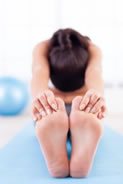 Australian surgeons are now practicing minimally invasive surgery for bunions to reduce the amount of pain and recovery time for patients. Michelle Thacker of North South Wales experienced both minimally invasive surgery and traditional bunion surgery for the bunions on her left and right feet. The difference between the two are that minimally invasive surgeries include a bunch of smaller 3mm incisions with the bunion drilled and realigned with screws; traditional surgeries include one large incision. After the second bunion surgery using minimally invasive surgery, Thacker stated, “the recovery time was much quicker - a lot less pain post op, I can barely see a scar and I was able to run after three months.”
Australian surgeons are now practicing minimally invasive surgery for bunions to reduce the amount of pain and recovery time for patients. Michelle Thacker of North South Wales experienced both minimally invasive surgery and traditional bunion surgery for the bunions on her left and right feet. The difference between the two are that minimally invasive surgeries include a bunch of smaller 3mm incisions with the bunion drilled and realigned with screws; traditional surgeries include one large incision. After the second bunion surgery using minimally invasive surgery, Thacker stated, “the recovery time was much quicker - a lot less pain post op, I can barely see a scar and I was able to run after three months.”
Bunion surgery usually occurs after non-surgical methods have proved to be ineffective. If you have any concerns contact one of our podiatrists of University Foot and Ankle Center, LLC. Our doctors will treat your foot and ankle needs.
What is a Bunion?
A bunion is formed of swollen tissue or an enlargement of boney growth, usually located at the base joint of the toe that connects to the foot. The swelling occurs by the bones in the big toe shifting inward, which impacts the other toes of the foot. This causes the area around the base of the big toe to become inflamed and painful.
Why do Bunions Form?
- Genetics – susceptibility to bunions are often hereditary
- Stress on the feet – poorly fitted and uncomfortable footwear that places stress on feet, such as heels, can cause bunions to form
How are Bunions Diagnosed?
Doctors often perform two tests – blood tests and x-rays – when trying to diagnose bunions, especially in the early stages of development. Blood tests help determine if the foot pain is being caused by something else, such as arthritis, while x-rays provide a clear picture of your bone structure to your doctor.
How are Bunions Treated?
- Refrain from wearing heels or similar shoes that cause discomfort
- Select wider shoes that can provide more comfort and reduce pain
- Anti-inflammatory and pain management drugs
- Orthotics or foot inserts
- Surgery
If you have any concerns please feel free to contact our offices located in East Brunswick and Monroe Township, NJ. We offer the newest diagnostic tools and technology to treat your foot and ankle needs.
The Best Running Shoe is Different for Each Individual Depending on their Foot Type
 The “best shoe” when it comes to running shoes may not necessarily be the best running shoe for everyone. When purchasing new running shoes, it may be best to shop at specialty running stores where employees are trained to find the right shoe for each customer. Running stores will typically measure your feet, gait, and type of running to determine if you are a neutral runner or a runner that needs stability. Each runner has pronation in their feet, the inward roll of the foot as it hits the ground in the running cycle. Different shoes are created to help those that over pronate or under pronate while running.
The “best shoe” when it comes to running shoes may not necessarily be the best running shoe for everyone. When purchasing new running shoes, it may be best to shop at specialty running stores where employees are trained to find the right shoe for each customer. Running stores will typically measure your feet, gait, and type of running to determine if you are a neutral runner or a runner that needs stability. Each runner has pronation in their feet, the inward roll of the foot as it hits the ground in the running cycle. Different shoes are created to help those that over pronate or under pronate while running.
The right running shoe is essentially different for every person. If you have any concerns contact one of our podiatrists of University Foot and Ankle Center, LLC. Our doctors will treat your foot and ankle needs.
Choosing the Right Running Shoes for Your Foot Type
Running is a physical activity although fun, can put a lot of stress on the joints, bones and ligaments of the body. Injury and stress on the foot can be an important factor on which kind of shoe you’re wearing. Running shoes should be worn based on your foot type. It is important to find out what fits you based on cushioning, stability and motion.
Determining your type
Speak with a shoe specialist or retail professional to see what your foot type is. They will be able to identify and measure your arch type, stride and gait.
Running Mechanics
When you are running or walking in your shoes, every step determines how your foot is landing. Pronation is the natural rolling of your ankle from outside to inside during foot strike.
Pronation is a correct form of walking or running. It helps absorb shock and store energy from your lower extremities. Neutral runners who pronate correctly do not need specific shoes, since they have stability and control.
Over-pronators
Those who run with excessive ankle rolling. Over-pronators tend to have ankles that angle inward, flat feet, and or bowed legs. This can cause a series of injuries: of the knees, ankles and Achilles tendons.
Under-pronation
Is less common than over-pronation. This usually happens to those who have inflexible feet and high arches. Even though there is less rotational stress on the ankles and knees, it prevents any kind of shock absorptions. Under-pronation needs shoes with increase in cushion and flexibility.
If you have any questions please feel free to contact our offices located in East Brunswick and Monroe Township, NJ. We offer the newest diagnostic tools and technology to treat your foot and ankle needs.
Effect of High-Heels on the Feet
For hundreds of years, women have been wearing various kinds of high-heels for mostly aesthetic reasons. Women who wear high-heels appear to be taller and to have longer and thinner legs, and the wearer’s gait and posture changes. Though high-heels have had an association with femininity and have kept them popular over the years, there are definite health problems caused by wearing them too frequently.
The motion of the ankle joints is limited when heels are worn. The ankle joint is very important to the body when it comes to walking. Because of their location, these joints have a great deal of weight put on them. Thus, it is very important to keep them as healthy as possible. The Achilles tendon is the main tendon in the ankle. Wearing high-heels too often, studies have shown, can cause the calf muscle and Achilles tendon to shorten and stiffen, which can cause problems when shoes without heels are worn.
By putting a great deal of pressure on the ball of the foot, by forcing the toes into a small toe box, high-heels can cause or may worsen many foot problems, such as corns, hammertoe, bunions, Morton’s neuroma and plantar fasciitis.
Not only does wearing very high-heels regularly have negative effects on the feet, the rest of the body can suffer as well. The knees, one of the most important joints in the entire body, can be affected by wearing high-heels. High-heels causes the knees to stay bent all the time. Also, it can cause them to bend slightly inward as well. Doctors believe that women can suffer from osteoarthritis later in life because of constantly walking like this. By limiting the natural motion of the foot during walking, high-heels also cause an increased in stress on the knees.
Similarly, the back may also be affected by high-heels because it causes the back to go out of alignment. If high-heels are worn constantly, the spine’s ability to absorb shock can cause continued back pain. They can compress the vertebrae of the lower back, and can overuse the back muscles.
However, this is not to say that high-heels can never be worn. If worn occasionally, they will not cause serious problems. They should not be worn every day in order to avoid the long-term physical health problems of the feet, knees, ankles, and back like mentioned above.
Vaccine Treatment for RA Found to be Effective through Queensland Study
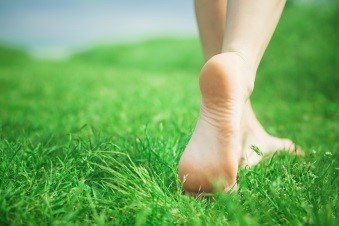 Results from a study by the University of Queensland show that the scientist created vaccine treatment for rheumatoid arthritis is safe and effective. Professor Ranjeny Thomas states that the vaccination is meant to treat the underlying causes of the disease, whereas most therapies only work in reducing symptoms and in slowing the development. The vaccination therapy or immunotherapy is meant for those with potential high risk RA gene known as CCP-positive. With the help of this new therapy, patients can reduce the amount of CCP causing inflammation by teaching the immune system how to properly handle the gene.
Results from a study by the University of Queensland show that the scientist created vaccine treatment for rheumatoid arthritis is safe and effective. Professor Ranjeny Thomas states that the vaccination is meant to treat the underlying causes of the disease, whereas most therapies only work in reducing symptoms and in slowing the development. The vaccination therapy or immunotherapy is meant for those with potential high risk RA gene known as CCP-positive. With the help of this new therapy, patients can reduce the amount of CCP causing inflammation by teaching the immune system how to properly handle the gene.
Rheumatoid arthritis can be a very painful disease to deal with. If you are suffering from rheumatoid arthritis, contact Dr. Genine Befumo and Dr. Mark J. Berger of University Foot and Ankle Center, LLC. Our doctors will treat your foot and ankle needs.
What Is Rheumatoid Arthritis?
Rheumatoid Arthritis (RA) is an autoimmune disorder in which the body’s own immune system attacks the membranes surrounding the joints. Severe pain and immobility are caused by an inflammation of the lining of your joints, and in worse cases the destruction of the joint’s cartilage and bone can occur.
Rheumatoid Arthritis of the Feet
Although RA usually attacks multiple bones and joints throughout the entire body, many cases result in pain in the foot or ankle area. Pain will often initially present in the toes before the condition worsens and spreads throughout the entire foot.
Symptoms
- Swelling and pain in the feet
- Stiffness in the feet
- Pain on the ball or sole of the feet
- Joint shift and deformation
Diagnosis
Quick diagnosis of RA in the feet is important so that your podiatrist can treat the area effectively. Your doctor may ask you about your medical history and lifestyle to help determine possible causes of your RA.
Treatment
Unfortunately, there is no cure for RA, so treatment options are designed to specifically target the symptoms of it, most notably the pain it causes. Two types of anti-inflammatory drugs – non-steroidal or NSAIDs and corticosteroids – may be prescribed by your doctor. In some severe cases where the joints are too badly damaged, surgery may be an option. As always, speak with your podiatrist to help determine the appropriate treatment options available to you.
If you have any questions please feel free to contact our offices located in East Brunswick and Monroe Township, NJ. We offer the newest diagnostic tools and technology to treat your foot and ankle needs.
Blog Archives
- May 2024
- April 2024
- March 2024
- February 2024
- January 2024
- December 2023
- November 2023
- October 2023
- September 2023
- August 2023
- July 2023
- June 2023
- May 2023
- April 2023
- March 2023
- February 2023
- January 2023
- December 2022
- November 2022
- October 2022
- September 2022
- August 2022
- July 2022
- June 2022
- May 2022
- April 2022
- March 2022
- February 2022
- January 2022
- December 2021
- November 2021
- October 2021
- September 2021
- August 2021
- July 2021
- June 2021
- May 2021
- April 2021
- March 2021
- February 2021
- January 2021
- December 2020
- November 2020
- October 2020
- September 2020
- August 2020
- July 2020
- June 2020
- May 2020
- April 2020
- March 2020
- February 2020
- January 2020
- December 2019
- November 2019
- October 2019
- September 2019
- August 2019
- July 2019
- June 2019
- May 2019
- April 2019
- March 2019
- February 2019
- January 2019
- December 2018
- November 2018
- October 2018
- September 2018
- August 2018
- July 2018
- June 2018
- May 2018
- April 2018
- March 2018
- February 2018
- January 2018
- December 2017
- November 2017
- October 2017
- September 2017
- August 2017
- July 2017
- June 2017
- May 2017
- April 2017
- March 2017
- February 2017
- January 2017
- December 2016
- November 2016
- October 2016
- September 2016
- August 2016
- July 2016
- June 2016
- May 2016
- April 2016
- March 2016
- February 2016
- January 2016
- December 2015
- November 2015
- October 2015
- September 2015
- August 2015
- July 2015
- June 2015
- May 2015
- April 2015
- March 2015
- February 2015
- January 2015
- December 2014
- November 2014
- October 2014
- September 2014
- August 2014
- July 2014




